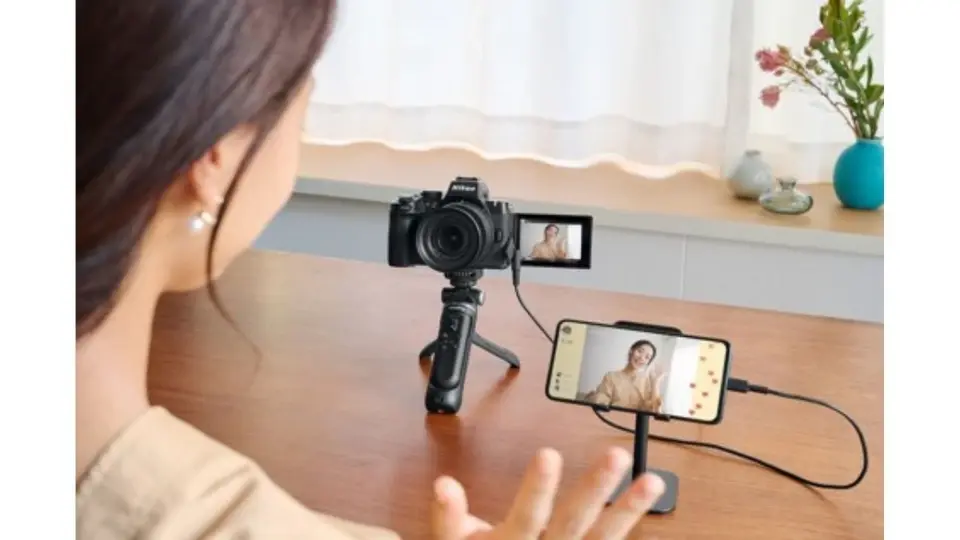Although at first glance they appear extremely similar, there are really a number of changes between the Nikon Z50 II and the Nikon Z50 in terms of their major characteristics and functions.
So we're providing you an in-depth Nikon Z50 II vs Nikon Z50 head-to-head comparison to help you select between these two entry-level mirrorless cameras.
You may also read our thorough Nikon Z50 review to find out exactly what we think about that particular camera.
Sensor
-
These two cameras give precisely the same number of megapixels since they both utilize exactly the same sensor
-
The image sensor utilized in the Z50 II and Z50 is a 20.9 megapixel APS-C CMOS sensor.
Processor
-
The older Z50 utilizes the previous generation EXPEED 6 CPU, and the newer Z50 II uses the current EXPEED 7 processor.
-
This provides the 2024 camera a number of benefits in terms of AF performance and capturing options which we'll detail below.
ISO Speed

-
The native sensitivity range of both cameras for still photographs is ISO 100 to 51,200, which may be increased to 204,800. For video the ISO range is 100-25600.
-
The EXPEED 7 processor of the Z50 II means that it now generates less noise at higher ISOs for clearer photos, although having the same image sensor as the original Z50.
Video
-
The Z50 II has a superior video mode than the Z50 and is probably the one to buy if you're mostly a videographer.
-
The first model supported 4K/30p and Full HD/120p recording options.
-
The Z50 II has a superior video mode than the Z50 and is probably the one to buy if you're mostly a videographer.
-
The first model supported 4K/30p and Full HD/120p recording options.
Autofocus
-
The Z50 includes a hybrid phase detection and and contrast detection autofocus system with 209 AF points.
-
The Z50 II employs the newest Expeed 7 processor from from the flagship Z9 and Z8 cameras, thus it delivers exactly the same subject recognition choices and behavior.
-
It delivers reliable recognition of 9 subject kinds (humans, dogs, cats, birds, aircraft, vehicles, motorbikes, bicycles, and trains), with an Auto mode, 3D tracking, and configurable AF regions all accessible.
-
The Pre-Release Capture mode records photographs buffered up to one second before the shutter-release button is fully released while shooting in High-Speed Frame Capture+ (C30) release mode.
-
The Z50 II boasts an enhanced AF-A mode for stills, with the camera automatically converting to AF-C mode when detecting even the subtlest motions.
Burst Shooting
- Both cameras can can shoot at a reasonable 11fps with full-time focusing and auto-exposure using the electronic shutter and a more pedestrian 5fps using the mechanical shutter.
Body and Design
-
The design of the body and controls is similar, but not identical, between the Z50 II and the Z50.
-
The exterior controls are in much the same positions on both cameras, save for the Info and Magnify buttons on the rear which are now positioned as on higher-end versions.
-
One of the key modifications is the new dedicated Picture Control button on the top-panel of the Z50 II. The effects are apparent in real time, and it’s easy to cycle through the different settings while filming.
-
Nikon Imaging Cloud support for the Z50 II lets you to apply custom Picture Controls, exactly like on the equivalent Z6 III (no other cameras yet support Nikon Cloud).
-
The current version has the same weather-sealing as the previous one and both variants include a built-in pop-up flash. The Z50 II sports a redesigned, bigger grip.
Read Also: Underwater fashion photography: Fashion Below the Waterline
Viewfinder

-
Both cameras contain a 2,360k-dot electronic viewfinder, however the new 1000 cd/m2 electronic viewfinder on the Z50 II is about twice as bright as the EVF incorporated into the Z50.
-
The bright EVF gives a crisper view of the details even while shooting in intense sunshine, gloomy situations, or changing light conditions.
-
The Z50 II also features a thinner EVF that doesn’t protrude as much as on the Z50. It has a non-removable EVF cover that requires tools to remove.
LCD Screen
-
The Z50 II sports a bigger 3.2 inch vari-angle vari-angle LCD screen (3 inch on the Z50) which is the same as the Z6 III display.
-
The Z50 includes a 180-degree flip screen that's more suited to stills photography.
IBIS
-
Neither the Z50 II or Z50 offer in-body image stabilisation (IBIS), instead depending on the connected lens to deliver it.
-
You may utilize the electronic vibration control option on both cameras to assist stabilise your video footage, although it does add a 1.3x cut.
-
The Z50 II delivers greater electrical VR compared to the Z50, especially when utilizing rapid shutter rates.
Webcam and Streaming
-
One cable is all it takes for vloggers and video streamers to connect the Z50 II immediately to a smart device and go live on the video platform of their choice.
-
You may now also use it as a camera without needing to install the camera utility software.
Conclusion
The Z50 II is more plainly oriented at vloggers and filmmakers, with virtually all of the significant improvements between the two models focused at making life simpler for anyone going up from a smartphone.
They are extremely comparable in terms of their photography capabilities, despite the 5 year difference between them, so the Z50 is still worth considering if you're more of a hybrid photographer than an out-and-out video producer.
